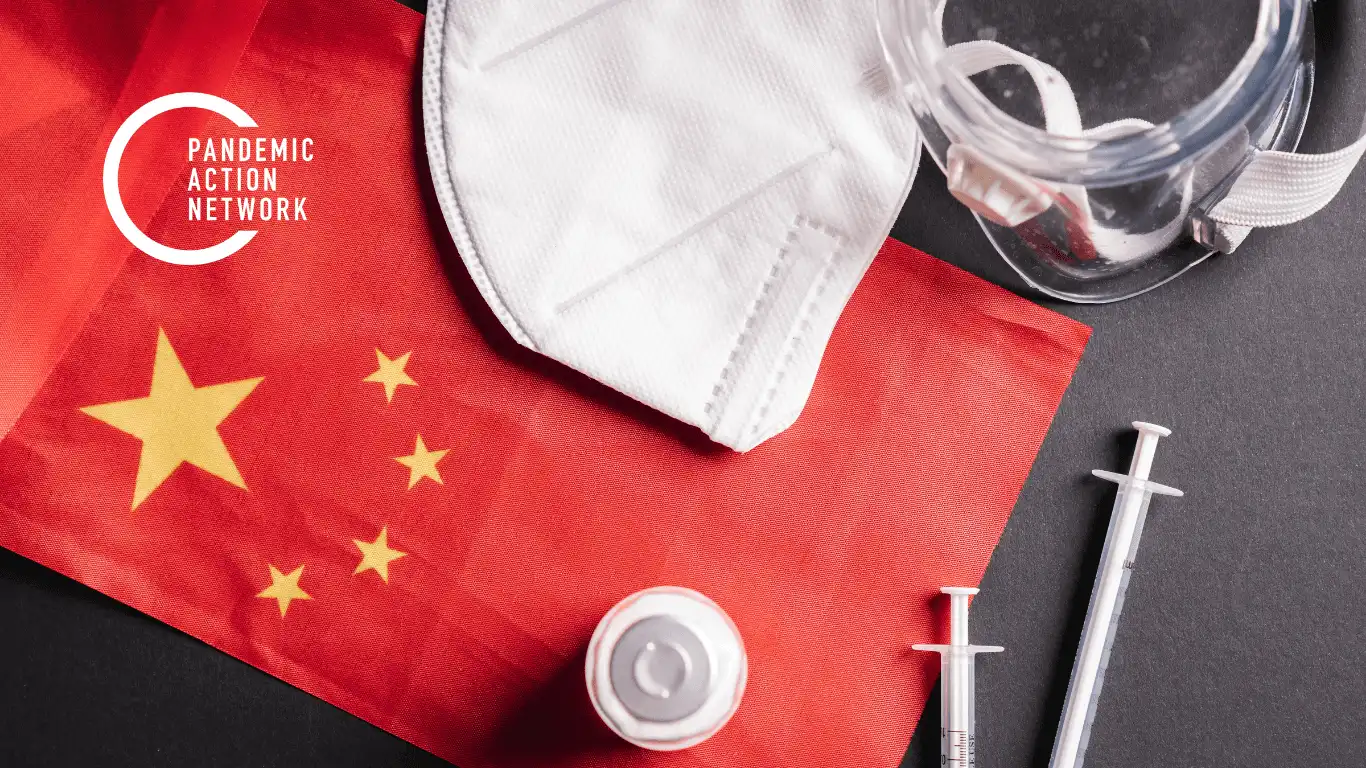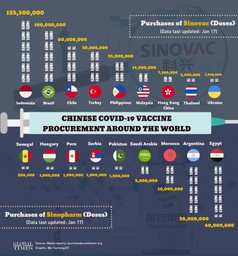By Ming Geng
Ending the pandemic requires a robust, coordinated global response ― the virus does not respect borders. The longer COVID-19 is allowed to languish anywhere in the world, the more likely we will see other highly transmissible variants of the virus emerge and a continuing loop of infections, needless deaths, and lockdowns. Yet most of the world’s population still lacks a clear path to access the vaccines and other tools they need to stop this pandemic and prepare for the next one. Without concerted and swift action on all fronts, it could be years before COVID-19 vaccines are widely available in many low- and middle-income countries.
Amidst this context, the Chinese Ministry of Foreign Affairs issued the following statement, “The whole world needs to pull together in order to defeat the pandemic. China will continue to provide in a timely manner, to the best of its capability, vaccines to relevant countries, especially the developing countries, and contribute its share to building a global community of health for all. We also hope the international community will work together to promote the equitable allocation and use of vaccines globally to make sure developing countries have access to and can afford them.”
The following briefing details the current state of China’s vaccine development and distribution strategy.
Vaccine Development
Sinovac and Sinopharm are the two most advanced COVID-19 vaccine developers in China.
Sinovac Research and Development Co., Ltd, the Beijing based biopharmaceutical company is behind the CoronaVac, an inactivated COVID-19 vaccine. CoronaVac has recently been authorized for emergency use in Bolivia, Brazil, Chile, Indonesia, and Turkey. There is now an academic debate on the wide range of the efficacy rate of CoronaVac reported by different countries. The effectiveness ranges from 91.25% in Turkey to 50.4% in Brazil.
The China National Pharmaceutical Group (Sinopharm) has led the development of two inactive COVID-19 vaccines which have gone through phase III clinical trials in several countries. BBIBP-CorV is developed by Sinopharm, China National Biotec Group, and the Beijing Institute of Biological Product, and has already received emergency use authorization from China, Bahrain, and the United Arab Emirates (UAE). The other inactive vaccine candidate is developed by Sinopharm, China National Biotec Group, and the Wuhan Institute of Biological Product. This vaccine is currently undergoing phase III clinical trials in UAE, Peru, Morocco, and China. Some reports indicate that this vaccine has also been granted emergency use authorization in some countries.
According to the World Health Organization (WHO), there are currently three Chinese vaccine candidates that are undergoing phase III clinical trials, which are Ad5-nCov by CanSino, ZF2001 by Anhui Zhihui Longcom, an unnamed SARS-CoV-2 vaccine by the Chinese Academy of Medical Sciences. In addition, there are three Chinese vaccine candidates that are currently in phase II clinical trial: DelNS1-2019-nCoV-RBD-OPT1 by Wantai Biological Pharmacy, a Recombinant SARS-CoV-2 by West China Hospital, and an inactivated SARS-CoV-2 vaccine (Vero cell) by Beijing Minhai Biotechnology Co. In addition, Chinese manufacturers are also actively involved in global vaccine development cooperation. Most notably, Fosun Pharma participated in Pfizer-BioNTech COVID-19 vaccine development.
Vaccine Distribution ― Domestic Market
The current vaccination strategy in China is a two-step approach: the first step targets priority groups, and the second step covers the rest of the population. At present, the vaccination campaign covers people ages 18 to 59 with a high risk of infection and transmission, including people engaged in the handling of imported cold-chain products, people working in wet markets, medical workers, customs officers, watercraft pilots, air crews, public transport workers, and people who have to work and study abroad in high-risk countries.
According to a recent press conference held by the National Health Commission on January 13, China will expand the target population for COVID-19 vaccination to include elderly people over the age of 60. The expanded strategy is due to increasing data from clinical research on vaccines, a growing supply of vaccines, and the need to better control the outbreak.
In addition, youth ages 3 to 17 years-old may also be vaccinated as early as March 2021, according to Sinopharm. The company is submitting relevant clinical data to the National Medical Products Administration.
According to the National Health Commission, more than 10 million people have already been vaccinated as of January 13, 2021. The aim is to vaccinate another 40 million by Chinese New Year. In Beijing alone, it was reported that 1.7 million people have been vaccinated in 205 infusion sites, set up across the city.
Beyond the domestic vaccination plan, the Chinese government also will provide assistance to Chinese citizens who now live abroad in receiving vaccination, especially with Chinese-produced vaccines.
Vaccine Distribution ― International Market
As of January 15, at least 20 countries have purchased COVID-19 vaccines developed by Chinese manufacturers, including Sinovac and Sinopharm, according to Global Times calculations, with more planning to purchase Chinese vaccines, despite politicalized scrutiny by some western media over their efficacy and safety.
The following graph shows the purchase of COVID-19 vaccines produced by two main Chinese vaccine manufacturers.
According to China’s Ministry of Foreign Affairs, China has already joined COVAX, the global initiative on equitable access to COVID-19 vaccines. In order to bridge the huge supply gap in developing countries, China will donate 10 million doses of vaccines to COVAX upon the request from WHO. Meanwhile, China is providing vaccine aid to Pakistan, Brunei, Nepal, the Philippines, Myanmar, Cambodia, Laos, Sri Lanka, Mongolia, Palestine, Belarus, Sierra Leone, Zimbabwe, and Equatorial Guinea, altogether 13 countries. In addition to taking an active part in COVAX, China is targeting reach to additional 38 low- and middle-income countries.




